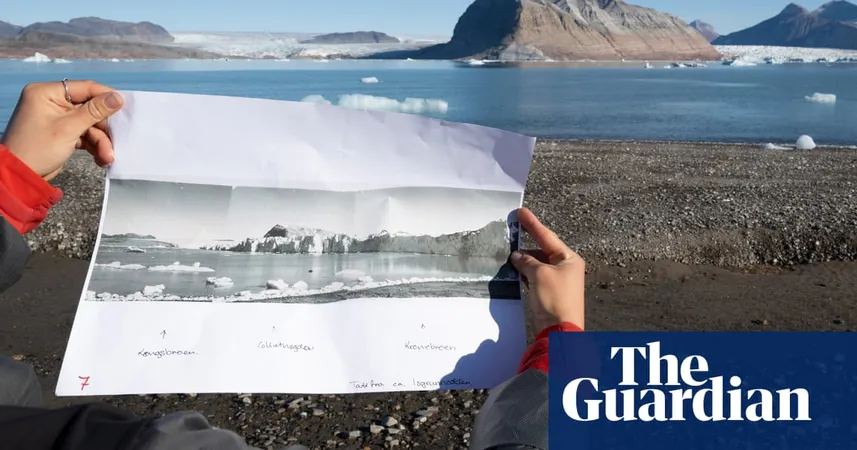
Shocking Transformation: A Photographer’s Journey to Capture the Disappearance of Glaciers
2024-11-05
Author: Chun
A Chilling Reality
In an awe-inspiring yet heartbreaking journey, photographer Christian Åslund stands on an Arctic archipelago, the sun glaring down as he witnesses a chilling reality: a glacier he last visited in 2002 is nearly gone. This revelation unfolds against the backdrop of global climate change—a phenomenon that has rapidly transformed our planet.
Documenting the Melting
Two decades ago, Åslund embarked on a mission with Greenpeace to capture stunning comparisons of Svalbard's glaciers using photographs taken from the early 20th century. The research aimed to document the alarming rate of ice melt, illustrating a stark difference that was already evident. Fast forward to summer 2023, Åslund revisited these locations, only to find that the glaciers have further dwindled away.
The Alarming Acceleration
The acceleration of glacier melting is alarming; it was recently reported that Svalbard experienced its fastest melting rates on record this summer. In a single day, approximately 55mm of water equivalent was lost, a staggering rate five times higher than typical. If these glaciers completely melted, sea levels could rise by as much as 1.7 centimeters. The region has seen a temperature increase of a startling 4 degrees Celsius over the past 30 years, far surpassing the global average.
Reflections and Hope
Despite these daunting observations, Åslund remains hopeful. “I don’t feel powerless; I believe we can still turn this around,” he asserts. He emphasizes the importance of individual actions and collective efforts to combat climate change. Through his powerful images, he aims to expose the reality of glacier melt at a speed rarely seen elsewhere.
Confronting Skepticism
However, Åslund recounts a troubling aspect of confronting climate change: skepticism. When he first published his glacier images in 2002, many accused him of manipulating the photographs. Some claimed that the photos were taken in different seasons or were otherwise doctored. “I find it perplexing that some refuse to accept these findings,” he states, “especially when glaciers don’t fluctuate like seasonal snow or ice.”
A Call to Action
Åslund's quest goes beyond mere documentation; he hopes his work will ignite a sense of urgency among individuals and governments alike. “I aspire for this series to serve as a wake-up call,” he says, expressing hope that when he returns in another two decades, the transformation won’t be as dire.
Conclusion
This heart-rending narrative emphasizes not only the shocking reality of climate change but also our collective responsibility to address it before it is too late. The clock is ticking—will we heed the call to action before all glaciers fade into memory?


 Brasil (PT)
Brasil (PT)
 Canada (EN)
Canada (EN)
 Chile (ES)
Chile (ES)
 España (ES)
España (ES)
 France (FR)
France (FR)
 Hong Kong (EN)
Hong Kong (EN)
 Italia (IT)
Italia (IT)
 日本 (JA)
日本 (JA)
 Magyarország (HU)
Magyarország (HU)
 Norge (NO)
Norge (NO)
 Polska (PL)
Polska (PL)
 Schweiz (DE)
Schweiz (DE)
 Singapore (EN)
Singapore (EN)
 Sverige (SV)
Sverige (SV)
 Suomi (FI)
Suomi (FI)
 Türkiye (TR)
Türkiye (TR)